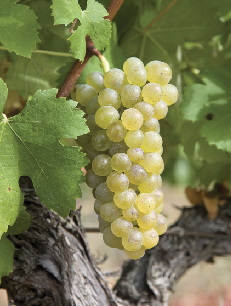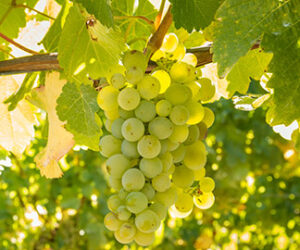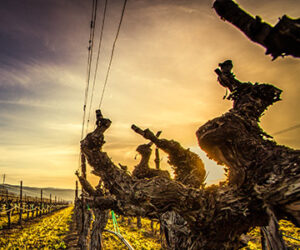 When I think about extinction, the first thing that comes to mind is the dinosaurs, or the dodo bird, perhaps maybe even the passenger pigeon. But it is hard to believe that a grape could become extinct. Here is a plant that grows and propagates in a variety of climates and elevations. It is present on all continents except Antarctica, but I would imagine, it might even be there in some special greenhouse. Short of an all-out assault with herbicides, there is not much that can kill them.
When I think about extinction, the first thing that comes to mind is the dinosaurs, or the dodo bird, perhaps maybe even the passenger pigeon. But it is hard to believe that a grape could become extinct. Here is a plant that grows and propagates in a variety of climates and elevations. It is present on all continents except Antarctica, but I would imagine, it might even be there in some special greenhouse. Short of an all-out assault with herbicides, there is not much that can kill them.
In general, the grapevine’s mechanisms to adapt in climates are amazing. They seek water by communicating with plants around them and sending their roots far and away. Also amazing is their ability to push secondary buds in the event of a spring frost event and still produce somewhat of a crop. So, I had to think of this a little more after I researched this issue’s variety. It’s a variety that is becoming so popular that if it could grow in Antarctica, it would, because it seems to be everywhere else. But, it’s true — this was a variety on the brink of extinction, economic extinction that is. Fortunately, thanks to its many redeeming qualities, Viognier came back. Instead, it is now a grape varietal being embraced by both winemaking enthusiasts and wine drinkers alike. It is an alternative white wine grape with floral-like aromas, and a number of possibilities for inclusion in the world wine market. Chardonnay is still the top-selling white wine, but for those adventurous looking to move beyond, give Viognier a try.
So what constitutes economic extinction? In the case of Viognier, it was a time in the 1960s when so little of the variety was planted, that fruit yields were not sustainable. Just 35 acres (14 ha) were reported in the Northern Rhône. It buds early making it susceptible to spring frosts, and where it was being grown, it was also prone to coulure, or shatter. This is a condition that results when cool temperatures, wind, or rain are present when the grape flowers. Even though the flowers are self-pollinating, it happens. So if any of the flowers fail to pollinate, it creates an open, skeleton-like cluster. In some varieties that experience shatter, the openness fills in as a result of the cluster producing bigger berries, but that is not always the case.
The Return of Viognier
So what happened? Viognier, when there was a successful harvest during those times, was known for its distinctive aromas of May blossom, apricot, ginger, and honeysuckle. It was an appreciated variety based on those traits. Folks came to realize that perhaps it could be more successful if grown someplace else, where shatter may not be an issue. So growers in the Languedoc and California began experimenting with it. They worked to understand and overcome its viticultural limitations. There is a lot to be said about where and where not to grow a particular variety, but things finally seemed to be going in the right direction for Viognier. California pushed to plant Viognier in the Central Coast counties, where a majority of its 2,700 acres currently grow. The acreage has been fairly constant over the last 10 years, perhaps adding about 20-30 additional acres per year.
Elsewhere in the United States, Virginia embraced Viognier, declaring in 2011 it would be the state’s signature grape from a national marketing perspective. This was in response to growers and winemakers realizing its thick skin helps protect it during their hot and humid summers. This is a trait that Chardonnay does not possess. Between 2006 and 2010, Viognier acreage in Virginia doubled to about 200 acres statewide, and has been relatively constant since then. Elsewhere in the world, it is found in Argentina, Chile, Australia, South Africa, and New Zealand where combined, Viognier had seen an almost a six-fold increase between 2005 and 2010. This all coming out of a tiny 35-acre (14-ha) block of Viognier that remained in the northern Rhône Valley. In retrospect, the variety just needed some time for growers to understand it better.
Viognier Viticulture
In the Northern Rhône, the wines that made Viognier popular were from vines grown on acidic, granitic soils and made into a dry wine style. In the Côte-Rôtie, it’s co-fermented according to local regulations with Syrah. This process adds a perfume-like aroma and helps stabilize the wine’s color. But as its popularity around the world spread, each new area presented different growing challenges to make it work, and new styles were born. Very much like those of the Côte Rôtie, New Zealand began producing a style that is rich in acidity, but balanced by the sweet aromas and flavors.
What growers and winemakers found is that it can grow on most soils as long as it is not water stressed, but needs to balance the canopy and fruit load. It does best when it has a longer growing season to develop the aromatics, the drawback being that the fruit comes in with very low acidity. A longer hang time not only results in a decrease in acidity, but the sugars start climbing too. Thus, you can be faced with a flat, insipid, high-alcohol wine.
Viognier Enology
The many faces of Viognier are evident in the wines it produces. I have considerable experience with the high-sugar, low-acidity issue at UC-Davis, where we have a small block we use for our teaching programs. This is probably one of the best teaching blocks we have. First off, the university soils are very deep clay-loam, and very fertile. Water is not an issue. The block is cropped to typical California cropping levels of 5–7 tons per acre (11.2–15.7 metric tons per ha). We hang the fruit well into the month of October to get the honeysuckle and ginger flavors typical of this block. Typical acidity levels at harvest are around 3 g/L, with the pH of the must well above 4.1. This harvest timing seems like the opposite thing to do, but you must remember that we are a teaching program.
Our goal on this block is to teach how to work with a grape like this. We whole cluster press the grapes, cold settle, and measure for sugar and acidity. Sugars are adjusted to 23–26 °Brix by adding water and our typical acid additions are insanely high, 3.0 to 4.0 g/L. But if you are faced with this situation, an aggressive approach is needed to lower your pH and maintain an acceptable acid structure. To attempt this acidulation process post-fermentation would likely result in an unbalanced wine. I have used this approach with the students for several years now. We have even modified the lab procedure in some years to cover the balance of acidity over a broad range, and looking at different alcohol levels. From my experience, my advice if you are faced with this situation in real time is to target about 13.5% alcohol by volume, and 6-g/L acid.
Other opportunities for high sugar must include considering making a dessert or late harvest wine style. The sugars and flavors start concentrating in the waning days of fall and Viognier is a good choice for these sweet styles. The approach is a little different than the aforementioned technique, but here is where special attention needs to be paid to yeast health. The osmotic pressures of high-sugar must associated with these style of wines can be very stressful to the yeast, therefore the yeast inoculum is more than doubled from the typical 25 g/hL, to 60-75 g/hL, and the acclimation process is modified. The process is the same as if you were carrying out an ice wine with high-sugar honey mead. While acidity is important, and my recommendation would be to treat the must normally, with a moderate acid addition up front to balance the alcohol and sugar. Always a fun endeavor and I think you can have a little fun with this if you have the opportunity. You just might be craving a bowl of ice cream with this concoction poured over the top.
The many faces of Viognier, all branching from a very bleak point in its history about 50 years ago, are thanks to people who found wonderful qualities in the fruit and felt it worth the time to understand it more. The leading factor in ameliorating this shortcoming was determining the importance of its grow site. While the growers in the Rhône Valley mainly grew it as part of tradition, those early pioneers took a chance to try to coax more out of the grape. They were able to eventually take it off the “endangered species list,” launching it into the worldwide spotlight it enjoys today. Too bad the dinosaurs, dodo birds, and passenger pigeons didn’t have that opportunity. Hmmm, maybe one of them would pair well on the dinner table with Viognier?
Viognier Late Harvest Style Recipe (5 gallons/19 L)
This is a relatively technical way to make a late harvest-style dessert wine from juice concentrate. Juice concentrates generally are pH- and acidity- adjusted so that no further adjustments are necessary to the juice, but some calculations are necessary to ensure the proper addition rates. Scale this up or down as needed. One 96-oz. (2.8-L) container will yield 1.5 gallons (5.7 L) of juice at 30-35 °Brix.
Ingredients
Viognier juice concentrate, ~68 °B (4 cans, 96-oz./2.8-L packaging). This product is seasonally available through various internet based or local home winemaking suppliers. Typical packaging is in 96-oz. (2.8-L) cans. Some adjustment to the calculations may be necessary if packaging is other than listed here. Using a concentrate is an easy way to make wine.
4 gallons (15.1 L) distilled/de-ionized water or alternatively, a source for chlorine-free water to dilute concentrate
Yeast EC1118
Go-Ferm (or equivalent yeast starter)
30 grams Fermaid K (or equivalent yeast nutrient)
Other equipment or needs specific to this recipe
6-gallon (22.7-L) food-grade plastic bucket for fermentation
5-gallon (19-L) carboy, 1 to 2 one-gallon (3.8-L) jugs
Racking hoses
Inert gas – nitrogen, argon or carbon dioxide
Ability to warm about 4 gallons (15 L) of water to 60–65 °F (15–18 °C)
Ability to maintain a fermentation temperature of ~65 °F (18 °C).
Ability to hold wine at 38–40 °F while settling
Thermometer capable of measuring between 40–110 °F (4–43 °C) in one degree increments
Pipettes with the ability to add in increments of 1 milliliter
Step by step
1. Clean and sanitize all your winemaking tools, supplies and equipment.
2. Warm water to about 65 °F (18 °C). Add the water to your bucket. You will use ~3.5 gallons (13.2 L) of water to dilute the concentrate. You are targeting 30–35 °Brix so have your refractometer handy. Sometimes this is not an exact science.
3. Add four cans of juice concentrate, using the warmed water to completely dissolve remaining concentrate in the can. Mix well. This can be done in the bucket or a pot on the stove. In the end, you will have about 5.5 gallons (21 L) of juice in the bucket at about 30–35 °B. Mix in the Fermaid K at a rate of 3 g/L. Set aside in a cool place. (~68 °F/20 °C).
4. Begin the yeast preparation for high-sugar juice, by warming the dehydrated yeast to room temperature.
5. Measure dehydrated yeast by pouring it into a disposable weigh boat on the scale. Weigh out 2–2.5 times the amount stated on the package (around 50–65 g/hL).
6. Measure GoFerm by pouring it into a disposable weigh boat on the scale. Weigh out 30 g/hL. Pour carefully, the dust is fine and can be irritating.
7. Add 10 times the weight of the yeast in non-chlorinated water to a beaker or other container. Adjust hot non-chlorinated tap water to reach 104 °F (40 °C).
8. Add GoFerm to water and dissolve completely by stirring with whisk. Gently break up clumps that may have formed.
9. Sprinkle the yeast on the surface of the water and let sit to rehydrate for 15 minutes. Make sure it is all wetted. A small amount of gentle mixing may be needed with a whisk.
10. While waiting, dilute a small amount of the diluted juice to ~20 °Brix and warm it to 86 °F (30 °C).
11. After the yeast have rehydrated for 15 minutes add an equal volume of 20 °Brix, 86 °F (30 °C) temperature juice to the yeast hydration container. Maintain this mixture at 86 °F (30 °C) for one hour, stirring every 30 minutes with whisk. A water bath may be necessary to maintain a constant temperature.
12. After one hour, add another equal volume of 86 °F (30 °C) juice. Maintain the mixture for 2 hours at 77 °F (30 °C), mixing every 30 minutes with whisk. The yeast starter culture is now at approximately 20 °Brix.
13. Add the yeast starter culture to the main juice tank (Carboy). This main volume of juice should be pre-heated to 68 °F (20 °C).
14. Maintain 68 °F (20 °C) for 24 hours to allow yeast to further acclimate, then drop temperature to 59 °F (15 °C) for the remainder of the fermentation.
15. Leave alone until bubbles in the air-lock are about one bubble per minute. Usually about two to three weeks. Start measuring the brix every 2–3 days.
16. The wine should self arrest its fermentation at about 10 °Brix. Taste periodically and chill to 41 °F (5 °C) when the desired taste is found.
17. Allow to clarify at 41 °F (5 °C).
18. At about three months you are ready to bottle. This style should have enough sugar and alcohol to not require a sulfur dioxide addition. Be sure to maintain sanitary conditions while bottling. Once bottled, you’ll need to periodically check your work by opening a bottle to enjoy with friends.
Notes:
This recipe assumes that the winemaker has a general knowledge of winemaking and sanitation. References to brands or trade names mentioned in this article do not constitute endorsement of the product by the writer.







